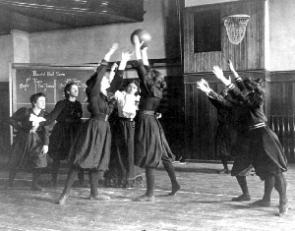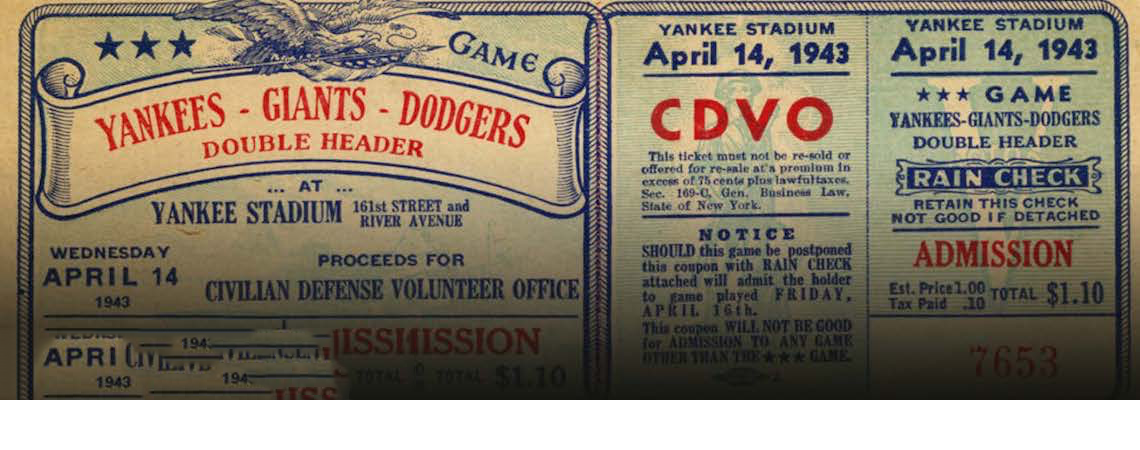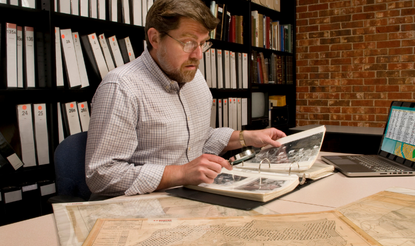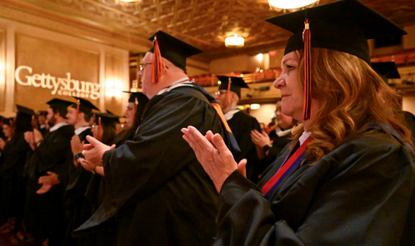The Impact of Title IX
by Barbara Winslow
 One of the great achievements of the women’s movement was the enactment of Title IX of the Education Amendments of 1972. The law states: "No person in the United States shall, on the basis of sex, be excluded from participation in, be denied the benefits of, or be subjected to discrimination under any education program or activity receiving Federal financial assistance." Most people think Title IX only applies to sports, but athletics is only one of ten key areas addressed by the law. These areas include: access to higher education, career education, education for pregnant and parenting students, employment, learning environment, math and science, sexual harassment, standardized testing, and technology.
One of the great achievements of the women’s movement was the enactment of Title IX of the Education Amendments of 1972. The law states: "No person in the United States shall, on the basis of sex, be excluded from participation in, be denied the benefits of, or be subjected to discrimination under any education program or activity receiving Federal financial assistance." Most people think Title IX only applies to sports, but athletics is only one of ten key areas addressed by the law. These areas include: access to higher education, career education, education for pregnant and parenting students, employment, learning environment, math and science, sexual harassment, standardized testing, and technology.
It’s hard to imagine that just forty years ago, young women were not admitted into many colleges and universities, athletic scholarships were rare, and math and science was a realm reserved for boys. Girls square danced instead of playing sports, studied home economics instead of training for "male-oriented" (read: higher-paying) trades. Girls could become teachers and nurses, but not doctors or principals; women rarely were awarded tenure and even more rarely appointed college presidents. There was no such thing as sexual harassment because "boys will be boys," after all, and if a student got pregnant, her formal education ended. Graduate professional schools openly discriminated against women.
In every area of athletics, girls and women faced discrimination, racism, homophobia, prejudice, and ridicule. Women were warned that physical activity was not only unfeminine but proof of lesbianism. Female athletes were depicted as physically unattractive and women were told that competitive sports would hurt reproductive organs as well as a woman’s chances of marriage. Women were seen as more "selfish" and not as team-oriented as men. Marginalized and trivialized, girls’ teams had to raise their own money through bake sales or carwashes, wear their school gym suit or make their own uniforms. School cheerleaders received more attention than female athletes. Girls played in empty gymnasiums. Parents who would come to see their sons wouldn’t watch their athlete daughters.
Those who defied the ridicule and institutional barriers did so because they loved their sport and to compete. Lynn Colella, who would go on to be an Olympic silver medalist in swimming, commented that female swimmers during her days at the University of Washington "ha[d] to be mean to themselves. There [was] no incentive for them to keep going. A boy ha[d] the possibility of college scholarships. There [weren’t] opportunities like that for women." Her brother, also a swimmer, had a full scholarship to UW.
Katherine Switzer, a 20-year-old Syracuse University junior, showed up to run the Boston Marathon in 1967. She wanted to prove to herself and her coach she was capable of running 26.2 miles. Women were not allowed to officially run the marathon, so no one questioned "K. V. Switzer" as it appeared on the application. In the middle of the race, Jock Semple, a Boston marathon official, jumped off a truck, ran toward Switzer and shouted, "Get the hell out of my race." Switzer managed to finish. She entered the Marathon with no agenda to promote women’s running. Her experience radicalized her, changing her outlook on women in sports. Today, Switzer serves as an official commentator for the New York City Marathon.
Another female athlete, Marge Snyder, remembers, "I played on my Illinois high school’s first varsity tennis team from 1968 to 1970. We were 56-0 over my three years. We were permitted to compete as long as we made no efforts to publicize our accomplishments and personally paid for our uniforms and equipment." Snyder would go on to work for the Women’s Sports Foundation. And another female athlete who faced adversity, C. Vivian Stringer, currently works as head coach of the championship Rutgers University women’s basketball team. Stringer began coaching at the historically black college Cheney State in 1971. She spent her own money to recruit players and had to drive her teams to their games in an unreliable, used prison bus.
The 1960s feminist movement, the black freedom struggle, a more active and aware youth culture, and other sources of social unrest roiled the nation as a whole and the sports world in particular. Equal rights, social justice, and equal opportunities in education and employment were dominant and popular themes. Patsy Mink of Hawaii rose in this cultural climate. As the first woman of color to be elected to Congress, she was no stranger to race and sex discrimination. Turned down by twenty medical schools, Mink pursued law. But no law firm would hire her. She entered politics in order to fight for gender and racial equality. In 1972 Mink and Edith Green, a Democrat from Oregon who focused on women’s issues, education, and social reforms, introduced Title IX, and were responsible for its passage. Fellow politician Daniel Patrick Moynihan would later state that Title IX was one of the most important pieces of education legislation in the history of the Republic.
The passage of the bill got very little attention until one event brought the issue of women’s sports and feminism to the national stage. Billie Jean King, who couldn’t get a tennis scholarship when she was a student Cal State Los Angeles, campaigned for higher pay and professional treatment for women tennis players. Opposed by sports media and even some women tennis players, she organized successful professional leagues for women. But she is most famous for defeating former Wimbledon champion and tennis hustler Bobbie Riggs in the so-called "Battle of the Sexes." The 1973 match captivated and changed the way women looked at themselves. "I just had to play," she said in a later interview with Newsweek. "Title IX had just passed, and I . . . wanted to change the hearts and minds of people to match the legislation."
The women’s movement, King’s leadership, and the passage of Title IX led to an outpouring of interest and participation in as well as funding for women’s sports. Marge Snyder related the impact of Title IX on her college career: "In one short year things changed dramatically. The passage of Title IX in 1972 meant that by 1973 there were college scholarships at the larger schools, money for equipment and uniforms, and expanded travel schedules. It also meant my small school’s tennis team was no longer competitive with the larger schools’ teams." Sue Gunter, the third-winningest women’s basketball coach in NCAA history, called a meeting of her squad at Stephen F. Austin University in 1972. "I told my kids they could be on a scholarship the next year." "Wow, you’ve got to be kidding, Coach, why?" they asked. "Because of Title IX." "I can’t remember what I ate for dinner last night, but I can remember those kids’ faces in 1972. Title IX kick started us. It gave us the juice to go on."
In 1971, fewer than 295,000 girls participated in high school varsity athletics, accounting for just 7 percent of all varsity athletes; in 2001, that number leaped to 2.8 million, or 41.5 percent of all varsity athletes, according to the National Coalition for Women and Girls in Education. In 1966, 16,000 females competed in intercollegiate athletics. By 2001, that number jumped to more than 150,000, accounting for 43 percent of all college athletes. In addition, a 2008 study of intercollegiate athletics showed that women’s collegiate sports had grown to 9,101 teams, or 8.65 per school. The five most frequently offered college sports for women are, in order: (1) basketball, 98.8% of schools have a team, (2) volleyball, 95.7%, (3) soccer, 92.0%, (4) cross country, 90.8%, and (5) softball, 89.2%. Since 1972, women have also competed in the traditional male sports of wrestling, weightlifting, rugby, and boxing. Parents have begun to watch their daughters on the playing fields, courts, and on television. A recent article in the New York Times found that there are lasting benefits for women from Title IX: participation in sports increased education as well as employment opportunities for girls. Furthermore, the athletic participation by girls and women spurred by Title IX was associated with lower obesity rates. No other public health program can claim similar success.
However, as part of the backlash against the women’s movement, opposition quickly organized against Title IX. Worried about how it would affect men’s athletics, legislators and collegiate sports officials became concerned and looked for ways to limit its influence. One argument was that revenue-producing sports such as college football should be exempted from Title IX compliance. Another was that in order for schools and colleges to comply, they would have to cut men’s sports such as wrestling. Others argued that federal legislation was not the way to achieve equality or even parity. Finally, conservative opponents of women’s rights believed that feminists used Title IX as an all-purpose vehicle to advance their agenda in the schools. Since 1975, there have been twenty court challenges to Title IX in an attempt to whittle down greater gender equity in all fields of education—mirroring the ups and downs of the women’s movement at large. According to the National Federation of State High School Associations, female students received 1.3 million fewer opportunities to participate in high school athletics than their male peers in the 2006–2007 school years. Yet as a result of Title IX, women have benefited from involvement in amateur and professional sports and, in turn, sports are more exciting with their participation.
Barbara Winslow is a historian who teaches in the School of Education and for the Women’s Studies Program at Brooklyn College, The City University of New York. Her publications include Sylvia Pankhurst: Sexual Politics and Political Activism (1996) and Clio in the Classroom: Teaching US Women’s History in the Schools (2009), co-authored and co-edited with Carol Berkin and Margaret Crocco. She is the founder and director of the Shirley Chisholm Project of Brooklyn Women’s Activism, 1945 to the Present (chisholmproject.com) and is currently completing a biography of Shirley Chisholm as well as writing about the Seattle Washington Women’s Liberation Movement.



